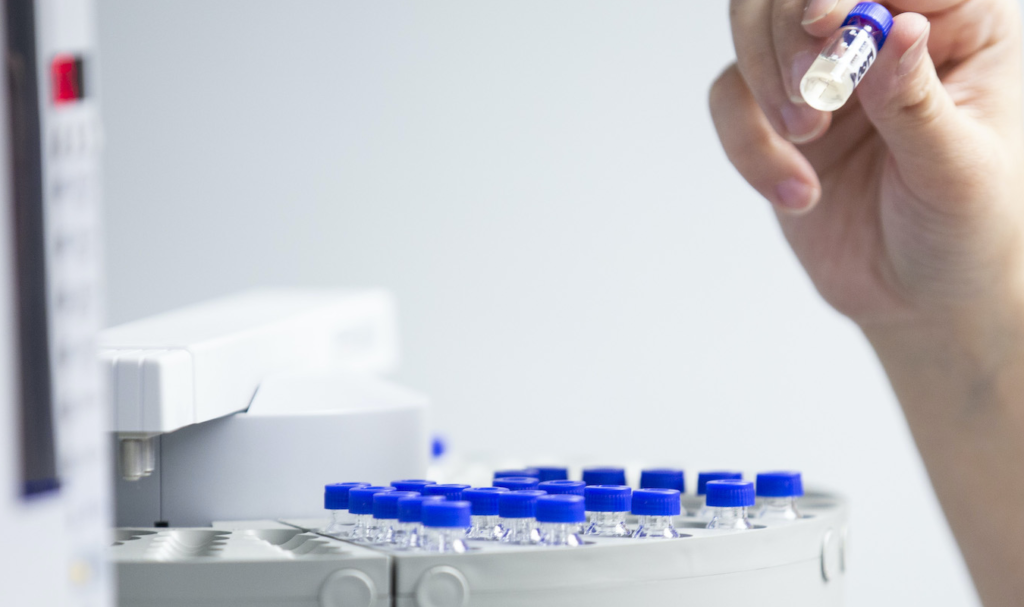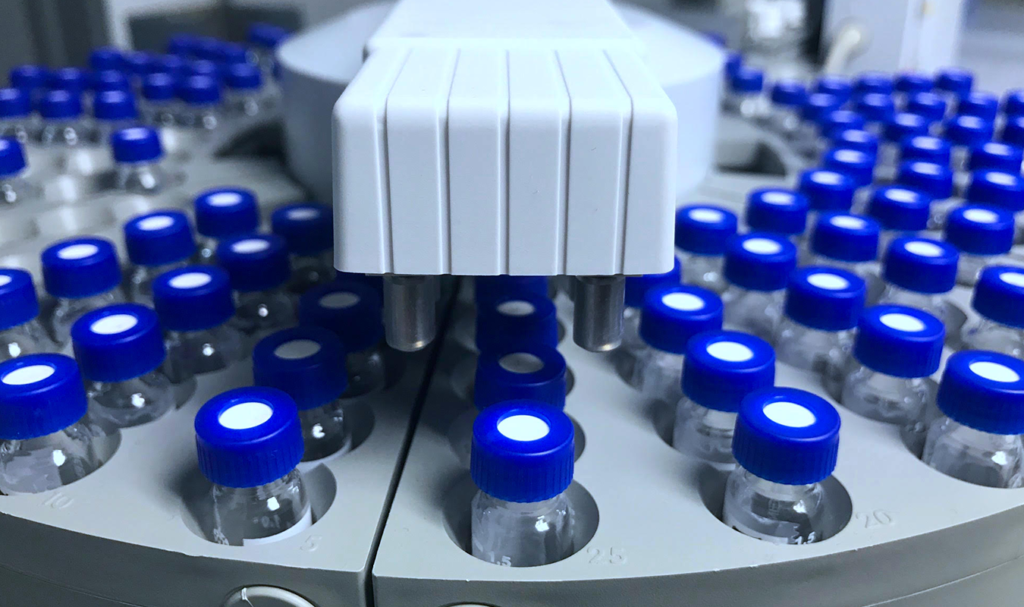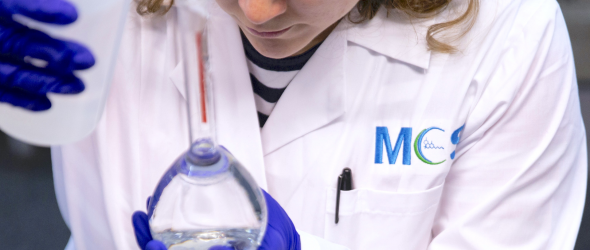There are a lot of variables when it comes to navigating the cannabis space. When consuming cannabis, everyone is going to have a unique experience. Even if two people consume the same product, their endocannabinoid systems will interact with the chemistry of the plant differently. This not only makes it more difficult for the consumer when it comes to purchasing, it also makes it more difficult for the person selling and/or producing cannabis products because they cannot guarantee how a product will make every consumer feel.
The consumer is in the driver’s seat when it comes to the experience; however, producers do have control over the quality and safety of their product. Unfortunately, not many consumers understand how to identify quality in cannabis products. Consumers generally make distinctions between products based on things like price, strain name, or branding—none of which speak to the quality of the product. A standard is needed!
Discerning Quality

Whether you are working in the industry or you are a customer trying to find the right product, locating helpful information about cannabis is often difficult to find and rarely market-specific. The unique nature of the cannabis experience and the need for quality standards are just two of the reasons why trustworthy testing is so important in the cannabis market. Customers need ways to discern quality, and producers are trying to develop products that meet the needs of the consumer. Trustworthy testing results meet the needs of both parties, and labs like Modern Canna are creating standards for testing that exceed the expectations of both the consumer and the producer!
Testing is required for cannabis products before they are able to enter the market. Consumers want to be sure that their products are free of contaminants like pesticides, mycotoxins, residual solvents, heavy metals, micro-organisms, and other impurities. Unfortunately, testing facilities have not always been a beacon of trustworthiness when it comes to providing consistent and reliable results. Thankfully, Modern Canna has developed extensive procedures that guarantee accurate and informative results every time.
COAs and Quality Control Data
The certificate of analysis (COA) is a document, commonly produced by third-party cannabis testing labs, which confirms whether or not a product meets regulatory specifications. COAs are typically generated as one-page documents which contain testing results from the third-party lab. The question the cannabis industry is currently asking, now more than ever before, is how do we know that the analytical results on a COA are valid?
First of all, it is important to understand that one-page COAs are essentially just summary reports. Behind every COA, there should also be a plethora of backend data that supports the validity of the results. This backend data is known as laboratory quality control (QC).
Secondly, it is also important to know that not all third-party testing labs in the cannabis space openly share QC data. If you are a producer and your third-party lab doesn’t openly provide QC data, make sure to ask them for it. An aesthetically pleasing graphic on the COA that reads something like “QC Performed” is not enough – ask to see the actual data! If you don’t know how to read QC data, simply ask your third-party lab to show you how. To put it bluntly, if your lab does not or cannot provide QC data upon request, then the results on the COA are essentially useless.
Good labs will always share QC, even if some regulatory agencies do not require them to do so. Labs should always provide QC data to 1.) help reassure clients that the analytical results are accurate, and 2.) to push for more universal transparency in the cannabis testing industry.
So what is laboratory QC?
Laboratory QC is a measure of precision, accuracy, and also guarantees the production of reproducible results over time and under varying operating conditions. QC is designed to detect, reduce, and correct deficiencies in a laboratory’s internal analytical process prior to the releasing of COAs. Laboratory QC materials should be loaded on the analytical instrument and ran with each batch of samples, from the beginning of a run to the end. Labs should also run QC after an instrument is serviced, when reagents are changed, after equipment calibration, and whenever results are questionable.QC materials should approximate the same matrix as the samples in the batch being tested.
See Exhibit A for an example of laboratory QC samples along with a brief description of each:

Consistently running QC does increase overhead for third-party labs, because extra labor and materials are required. Running QC essentially means that the lab is processing five or more internal samples with each batch they test, which requires extra time for sample prep and additional materials, like tubes, vials, gloves, solvents, standards, etc. However, this is the price labs need to pay in order to ensure accurate results.
Modern Canna’s Standard of Testing
Modern Canna’s procedures contain internal controls that include the monitoring of all testing procedures, equipment, and personnel, and Modern Canna’s advanced Laboratory Information System (LIMS) makes it easy to keep track of all the important data that is generated. In addition to stringent internal protocols, Modern Canna also brings in an external agency to make sure that the laboratory is functioning properly. Modern Canna is ISO/IEC 17025 accredited and NELAP certified, not to mention one of the very few Leafly Certified Labs.
You can be confident that the testing results you are receiving are accurate because “Modern Canna goes above and beyond to ensure that results, found in every final report and every certificate of analysis issued, are verifiable, reproducible, and defensible,” says George Fernandez, CEO of Modern Canna. “Our company is able to accomplish this by running strict quality control with every batch tested that includes at least a method blank, a laboratory control sample, a laboratory control sample duplicate, a matrix spike, and a matrix spike duplicate.”
Practically Speaking

The health and characteristics of a cannabis plant are dependent upon the environment in which it is grown. Through environmental and nutrients testing, Modern Canna gives growers the ability to keep their plants happy by knowing exactly what is contributing to their growth. After a cannabis plant is ready for the public, Modern Canna can provide a detailed report of the chemistry that is in each product and can identify anything that might be unwanted. For the consumer that already understands how cannabis interacts with their body, being able to shop based on cannabinoid and terpene profiles is as good as it gets. They can also be sure that the products they are consuming will be free of things like pesticides or mold.
Modern Canna continues to create a standard that industry leaders can use to produce quality products. Testing is the language that communicates information between a grower and their plants. It helps producers read the landscape so that they can adjust and produce better products. It also helps consumers better understand their cannabis. Whether it is about finding pesticide-free cannabis or a specific chemical profile, consumers can use this data to guide their purchasing and ensure better experiences.
Building long-term success in the cannabis industry is difficult–it requires consistency in production as well as building trust with consumers. Testing is a tool that can help you accomplish these goals, and Modern Canna continues to be the lingua franca that helps people reach their goals in the cannabis space.
By submitting this form, you will be subscribed to news and promotional emails from Leafly and you agree to Leafly’s Terms of Service and Privacy Policy. You can unsubscribe from Leafly email messages anytime.


